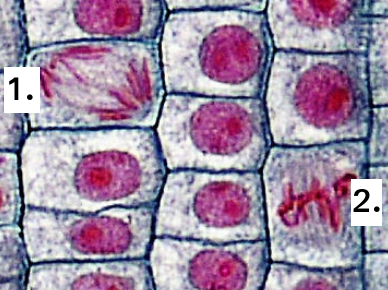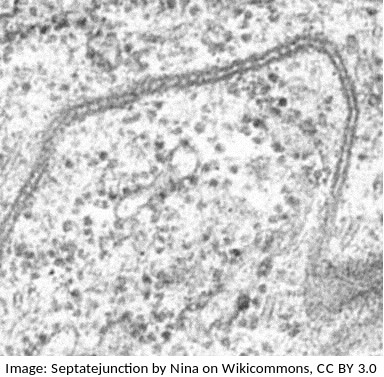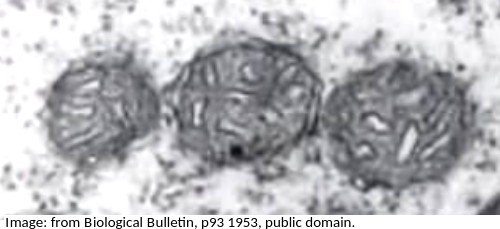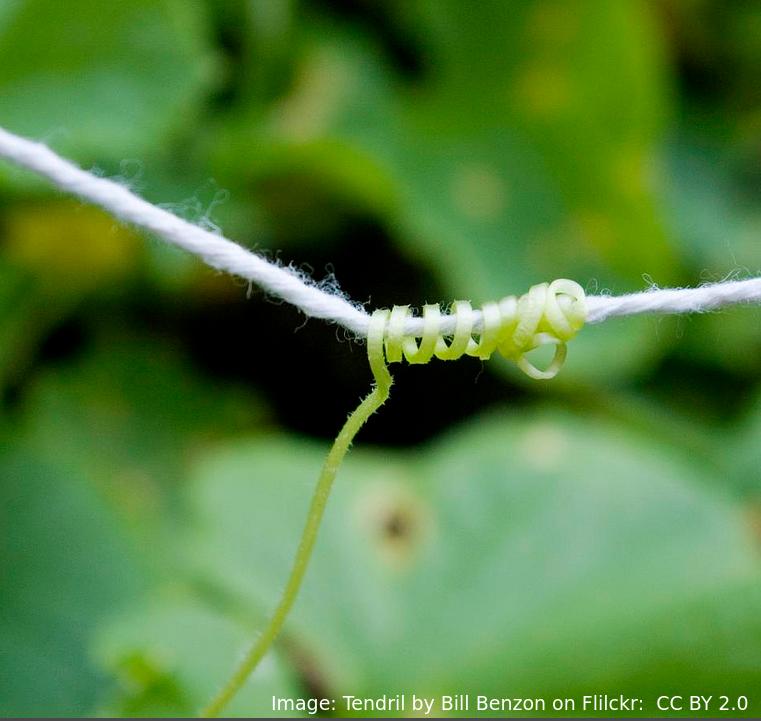Topic 1: Cell biology 
This page contains multiple choice questions in the style of Paper 1 of the Biology exams.
They test the breadth of your knowledge of the understandings and skills about cell biology.
To spend more time reviewing the topic before answering these questions, use the revision resources.
Cell biology revision resources
This page lists the understandings and skills expected for Topic 1 and links to the sub-topic pages which contain detailed revision notes, activities and past paper style questions. Great for revision.
Learn from any mistakes. Every question has an examiner's explanation that appears when you check your answers.
Huntington's Disease (HD) is a brain disorder that affects a person's ability to talk, and move. HD is caused by a faulty protein. The job of the protein is to direct vesicles containing important molecules to the outside of the cell. The chemicals are released when the vesicle reaches the membrane.
What is the name given to the release of chemicals by a cell in this way?
This is a type of secretion, the vesicle fuses with the plasma membrane and its contents are released. This is called "exocytosis".
During interphase of the cell cycle what happens to the DNA in the nucleus?
Under the microscope there is little change during interphase.
However interphase is a very active phase of the cell cycle with many processes occurring in the nucleus and cytoplasm. (It is subdivided into G1, S, G2 phases of the cell cycle)
DNA replication occurs during the S-phase.
The image below shows two cells undergoing mitosis.

Which of the following correctly identifies the stage of mitosis for each of the cells?
Identification of the phase of mitosis is an important skill.
The position of the chromosomes gives the best clue.
In Prophase, they are spread around the cell, and double stranded.
In Metaphase, the chromosomes are lined up on the spindle equator.
In Anaphase, the chromosomes are moving to opposite poles of the cell.
In Telophase, the two groups of chromosomes are separate, sometimes with a nuclear membrane.
Which one of the statements below best describes the mitotic index?
The mitotic shows the speed of cell division, which can be used as a tool to identify cancer.
It is calculated by dividing the number of cells doing mitosis by the total number of cells.
What effect does reducing the amount of cholesterol in a cell membrane have on its properties?
Cholesterol is a component of animal cell membranes. Application: Cholesterol in mammalian membranes reduces membrane fluidity and permeability to some solutes.
 The photograph is from an electron microscope image of a membranes.
The photograph is from an electron microscope image of a membranes.
Parallel dark lines are clearly seen.
In electron micrography, heavy metal stains are often used to enhance contrast. DNA and Proteins often show as dark areas because these molecules can attach to the stain.
Which of the following interpretations is most similar to the proposal of the Daveson-Danielli model of membranes?
Students are expected to know how to use evidence from electron microscopy to support an idea about membranes. One illustration of this is the proposal of the Davson-Danielli model.
Further evidence lead to the falsification of the Davson-Danielli model and the proposal of the fluid mozaic model.
The electron microscope image below shows three organelles found in an animal cell.
What is the name of the organelles?
Know how to idenfity the organelles in eukaryotes and draw their compartmentalised structure.
A mitochondrion (pleural = mitochondria) has an outer membrane and inner membrane folded into long thing 'flaps' called cristae.
The 'Cell theory' explains the nature of living things.
Which statement best describes Cell theory?
According to cell theory, living organisms are composed of cells.
Cells come from pre-existing cells and cells are the smallest using of life.
There are seven processes which are said to be possessed by all living things.
This sweet pea plant has grown a tendril around some string, to help support its upward growth.

Which of the characteristics of living things is illustrated in this photo?
The characteristics of living things (Mr H. Gren - metabolism, response, , homeostasis, growth, reproduction, excretion & nutrition)
The fly is responding to the closing trap, and the trap has responded to the presence of the fly.
Which of the structures listed below are involved in membrane transport?
Many transmembrane proteins are involved in transport of molecules across membranes. These can either provide a sort of molecular pore through which ions or molecules can pass (facilitated diffusion), or they can use ATP to actively move molecules, even against the concentration gradient (active transport).These are just two examples, transport can also occur by simple diffusion through the phospholipid bilayer, or by endocytosis.
Which is the best definition of a tissue?
Comment:Tissues may have one or several cell types and one or more functions
Human red blood cells are circular and 0.6 μm in diameter. A photograph of a red blood cell is shown as an illustration in a book with a diameter of 1.2mm. What is the magnification of the diagram?
Comment: Convert 1.2 mm into μm by multiplying x 1000 = 1200 μm (so that both units are the same). Then you can see that 0.6 x 2000 = 1200. Or use the formula Magnification = Image size/true size. If the photograph is larger than the cell, the magnification could not be 0.5x which would make it smaller. Eliminate obviously incorrect answers.
The image shows a cross section of trachea epithelium tissue. What is the best definition of a tissue?

A tissue may have one cell type or several and may have one or more functions. Tracheal epithelium has goblet cells to secrete mucus and columnar epithelial cells with cilia to remove contaminants and pathogens from the air and sweep them away from the lungs.
Why is a fungal hypha an exception to the cell theory?

A fungal hypha has many nuclei in a hypha but no cross walls to divide the hypha into cells.
Which organelle is visible in an electron microscope but not in a light microscope?

The ribosome is too small to be seen in the electron microscope, the other organelles were seen in the light microscope before the electron microscope was invented.
Which organelles are found in large numbers in secretory cells in animals? I Vesicles II Golgi Body III Mitochondria IV Rough endoplasmic reticulum.

Secretory cells synthesise proteins for exocytosis so have large numbers of mitochondria to supply energy, RER to synthesise the proteins for packaging into vesicles by the Golgi Body.
The diagram is of a plasma membrane. Which label corresponds to the hydrophilic area of an amphipathic molecule?

Protein (5) has both hydrophilic and hydrophobic areas to act as an integral protein. The central channel is hydrophilic.
Which is the best description of the genetic code?
The genetic code is universal (the codons code for the same amino acid in all organisms) but there are a very few exceptions, mostly in Archaea. A mutation does not alter the genetic code, it alters the base sequence of DNA.
Which component of the plasma membrane varies in function between differentiated cells?
The protein component of the membrane varies in structure and function.
Why is the cell component in the image regarded as an organelle?

The organelle is a cell component with a membane, the mitochondrion, it is adapted to aerobic respiration.
Refresh this page to try a new set of 20 multiple choice questions. The questions will be different next time you visit. Great revision.

 Twitter
Twitter  Facebook
Facebook  LinkedIn
LinkedIn